Unraveling the Hotel Saratoga Explosion
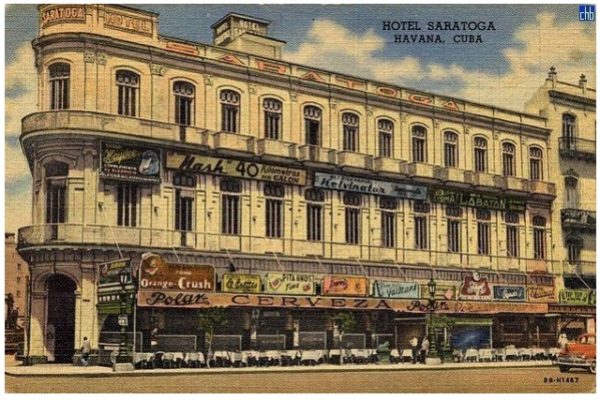
By Javier Herrera
HAVANA TIMES – On Friday May 6, 2022, at about 11 AM, one of Havana’s most emblematic and centrally-located hotels was left in ruins: the Hotel Saratoga.
The Hotel Saratoga was built in the 1870s, financed by the wealthy Havana landowner and Santander, Spain native, Gregorio Palacios. The building was planned to house tobacco warehouses on the ground floor, shops, and access hallways to the four residential apartments on the 2nd floor. The hotel of this name would be installed on the 3rd floor, with 43 rooms and a dining hall.
Located at the beginning of Monte Street, it was then moved in 1933 to its current base on Prado Street, or Paseo de Marti, on the corner of Dragones Street, with its main entrance on Prado, opposite the La India or the Noble Havana Fountain, just 60 meters away from Capitolio.
Hotel Saratoga has been included in tour guides as one of Havana’s key attractions, since 1935. Havana society would meet in its canopy to everyone’s delight and the country’s hit orchestras would play there. It’s important to note that Las Anacaonas, the first all-female orchestra, started out there.
The hotel was always open, with brief closing periods, up until the 1980s, when there was a medium-size fire and the resulting damage forced it to close for good.
After heavy renovations, with only the facade being kept as close to the original as possible, the hotel reopened its doors to international tourism in 2005. The centrally located and brand new hotel had 96 rooms, three bars, two restaurants, a swimming pool, a conference room and other facilities.
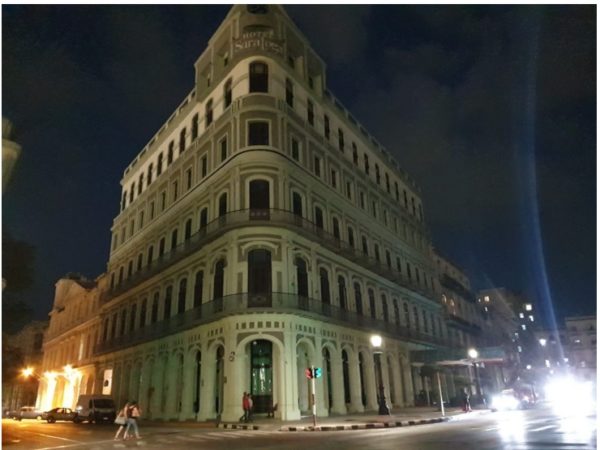
With a facade that is evocative of the colonial era and with an eclectic architectural style full of beautiful Cuban marble and French carpentry, the hotel was awarded 5 stars. In recent years, celebrities as big as Madonna, Beyonce and even an Arab sheikh with his entourage have walked along its luxury and expensive installations.
Things were moving along peacefully on that morning of Friday May 6th and work didn’t stop inside the hotel, getting ready for its reopening on the 15th that month, after having been closed for two years because of the COVID-19 pandemic that brought the world to a halt.
The clock marked 10:56 AM when an explosion shook much of Havana. The epicenter was the 2nd floor of the Hotel Saratoga, and the effects of the blast were felt over 1 km away, shattering shop windows and windows over 250 m away.
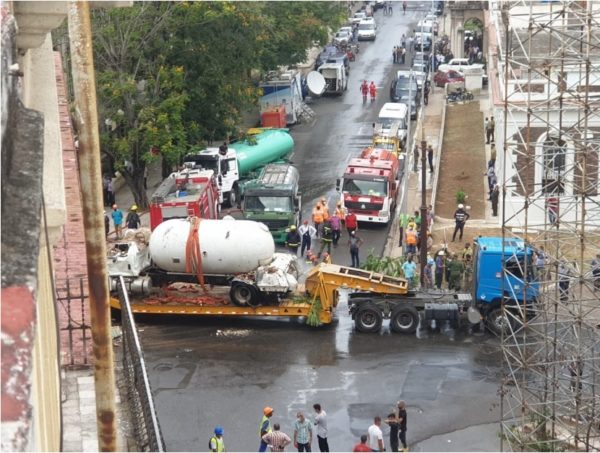
A cloud of dust enveloped surrounding streets. Cries, terror, and fear gripped passers-by. Neighbors were the first responders to the scene, who put their lives on the line to offer their hands amidst that cloud of smoke to rescue the injured with nothing else but themselves. Adrian Salazar Peña and Oscarito Rodrigues (el figaro), are an example of this, with the latter, without any authority, having to guide and organize police who arrived on the scene.
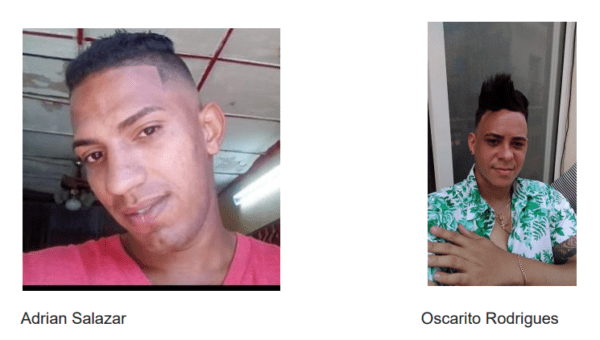
Police from the station just 70 meters away were unable to understand what was happening at the beginning, and so weren’t very quick to rescue those affected or contain the public. The nearest firemen, with their station just two and half blocks from the disaster, appeared on the scene 20 minutes after the explosion.

The hotel was pretty much all destroyed and almost none of its old facade has survived. The nearby school was severely damaged. The emblematic Marti Theater, just 50 meters away, has lost its beautiful grille, as well as doors and other exterior facilities. The block the hotel is on was severely damaged, with the neighboring building on Prado Street razed to the ground by the explosion. On Dragones Street, the neighboring building was completely destroyed and buried under rubble. El Calvario Baptist Church, located on Dragones Street also suffered serious structural damage, with different parts of its facilities collapsing, such as the auditorium.
Buildings on the back street didn’t get off any lighter and were seriously damaged by the great explosion, with one crumbling to the ground and another partially collapsing, because of the danger they represent.
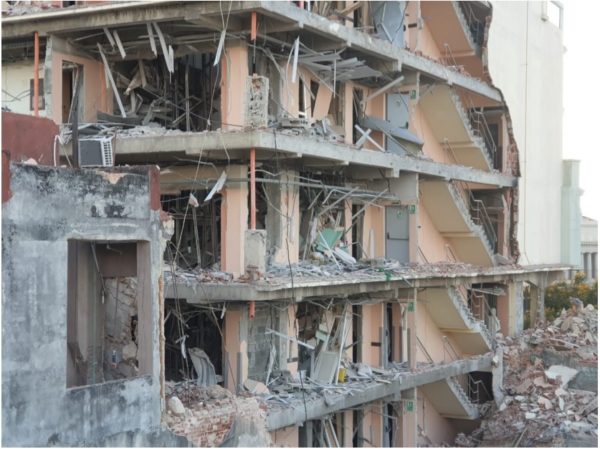
The greatest explosion in Havana after the La Coubre explosion (1960) resulted in the national economy losing millions of pesos, families forcibly displaced, destruction of heritage, 22 people injured and the significant number of 47 fatalities.
Just two hours after the disaster, Cuban president Miguel Diaz-Canel Bermudez appeared on the scene, and some experienced expert ruled that the cause of the explosion had been an accident while gas was being transferred to the hotel’s reserve tank. It goes without saying that Miguel Diaz-Canel’s words became the official version of events and remains the same today.
The many unanswered questions
Four months after the explosion, there are still many unanswered questions on the minds of those affected and other citizens who want to know the truth:
How could they discover the cause of the explosion just two hours after it occurred, when rescue teams still hadn’t entered the building, and rescue efforts hadn’t yet begun?
Why were they so quick to close the case?
Will a technical assessment ever be issued about the causes of the explosion, valued by experts?
If it really was a gas explosion, why did this accident happen and what measures have been taken for it never to happen again?
Can there be a gas explosion of this magnitude without a fire, soot or smell of gas?
If gas wasn’t the cause of the disaster, what was and who is/are responsible?
What will happen to those affected, who are now living in a hotel in the city’s outskirts?
Will families of those who perished in the disaster be compensated, as well as those affected who find their lives being ripped from their community?
Is there any more information than what we already know?
These are some of the questions that are eating away at the minds of victims and neighbors. Given the Government’s silence on the topic, we have no choice but to find our own answers. Neighbors who say they smelt gunpowder or explosives, call the official version of events into question and create or repeat theories, which could be labeled conspiracy theories because there is no proof.
The Cuban people are waiting for and deserve answers, the Government owes it to them.





